V Blender Working Principle: Everything You Need to Know
Are you thinking about using a v type blender in your manufacturing process? If you conduct a search on the internet for this type of blender, I'm willing to bet that you will get a ton of results.
Before you settle on a purchase for a decent V blender, there are a couple of things you should think about first.
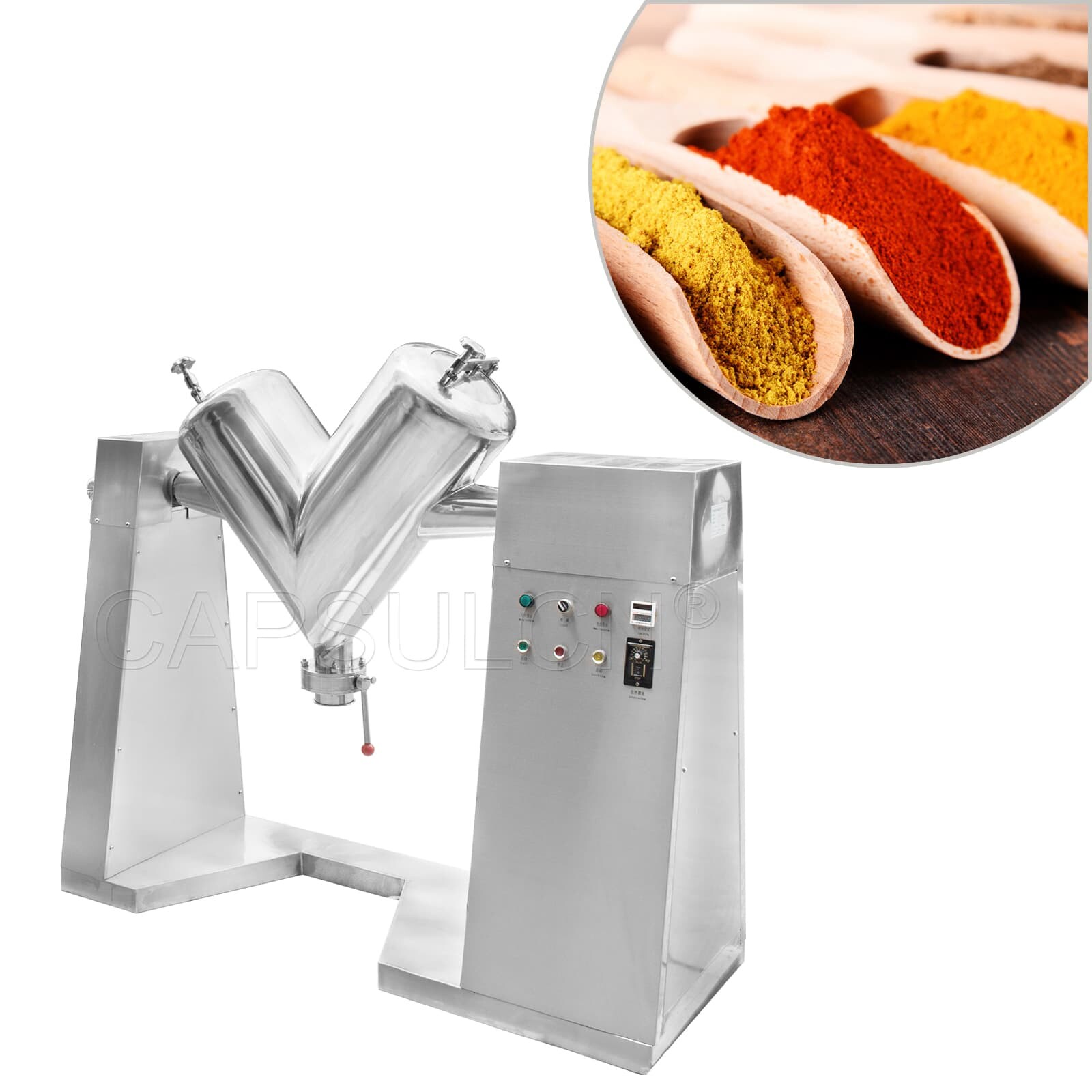
What is a V blender?
There are many types of mixers in pharmaceutical industry. And v blenders come from the tumble blending family. Today, there are mainly three types of tumble blenders out there: double cone blenders, slant cone blenders, and V blenders.
Read More:
What is Double Cone Blender: A Quick Overview
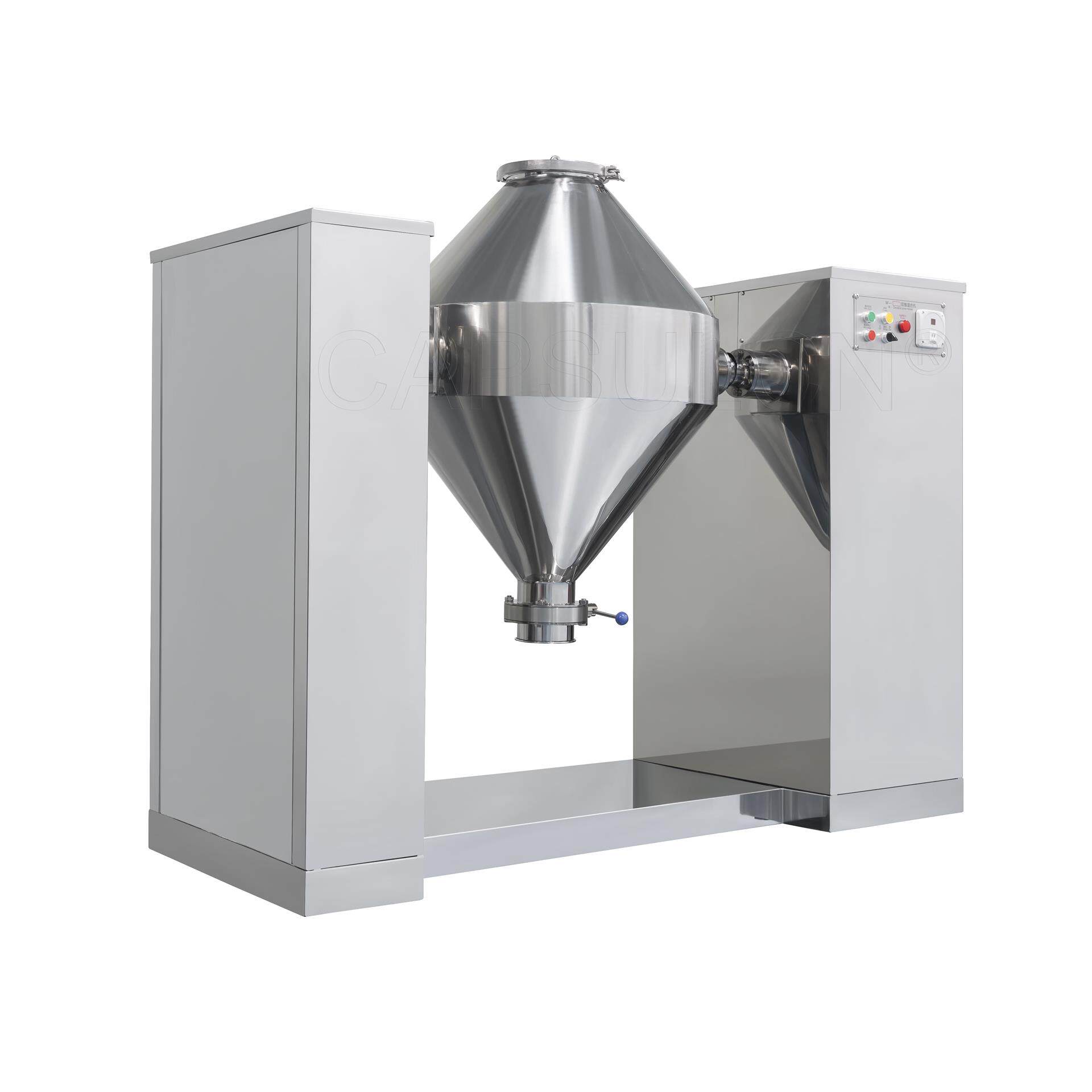
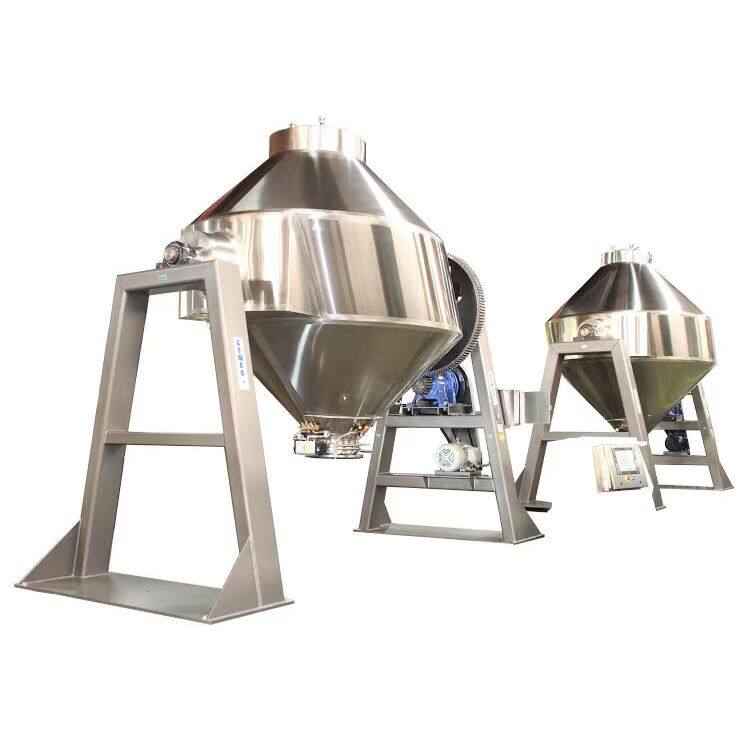
(Slant Cone Blender Image Credit:GEMCO)
Distinguished from its siblings, a V blender consists of two hollow cylindrical shells. The two shells are connected together in a V shape at an angle ranging from 75 degrees to 90 degrees. So, the V blender is also known as a twin shell blender or a V cone blender.
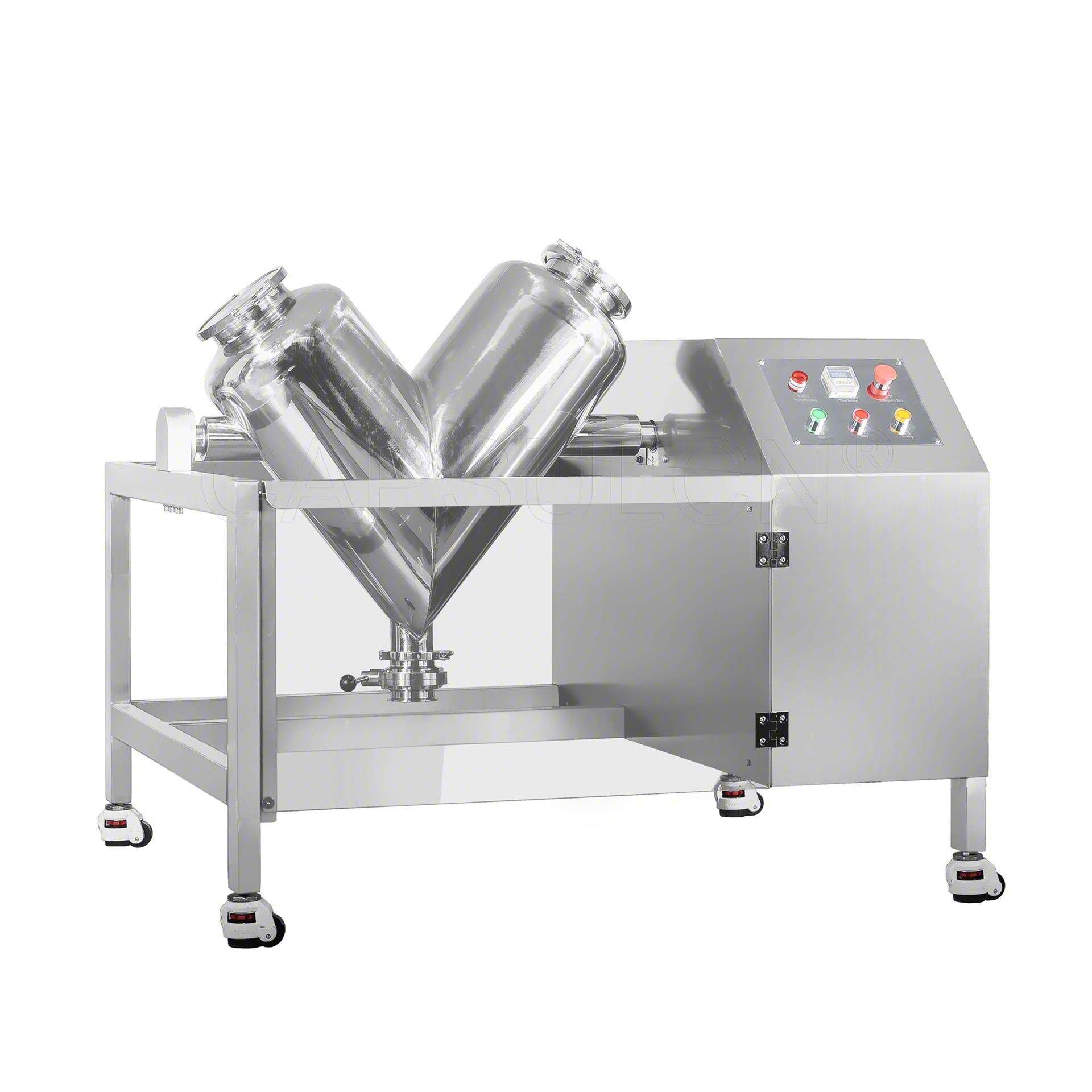
V blenders, in a nutshell, are one of the most popular pieces of equipment used for tumble blending. This is due to the fact that they are capable of providing rapid blending along with high levels of mixing efficiency.
Twin shell blenders are best suited for dry mixing. Yet, due to the low shearing force, they cannot be used to process very soft powders or granules. Even so, they are often used in a variety of industries, including pharmaceuticals, nutraceuticals, chemicals, food, cosmetics, fertilizers, and others.
Design and construction of V blender
If you've read this far, you might be wondering about the V blender working principle. There's no rush. We need a clear understanding of the V blender design before we can move on to learning how the V blender actually works.
So, let's begin by looking at the twin shell blender construction prior to exploring the V blender working principle.
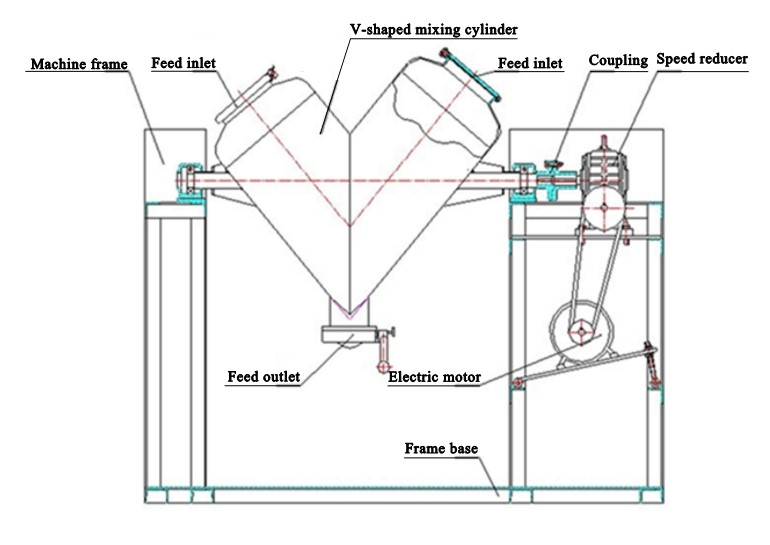
The twin shell blender resembles a vessel in a V shape, and it is made up of two inclined cylinders that are welded together. Most twin shell blenders come in a 304 stainless steel construction, complying with cGMP/GMP regulations.
This style of blender features three different openings. The two openings on the top of the V-shaped vessel function as feed inlets. Both of them are fitted with removable covers. The third opening on the bottom is equipped with a discharge valve that is used for discharging the mixed product.
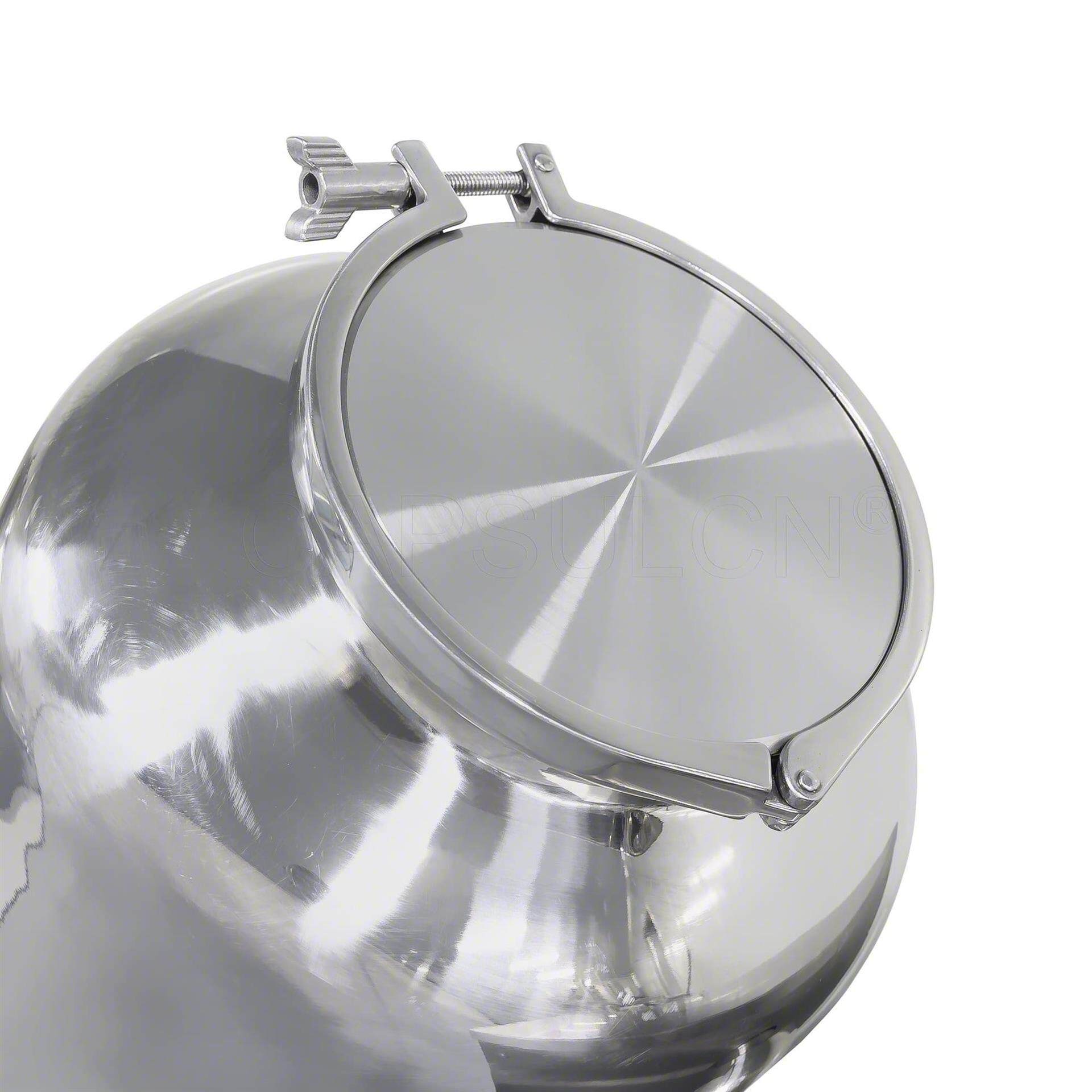

Unlike ribbon blenders, the V blender's mixing vessel is supported by trunnions on both sides rather than a rotating shaft. Trunnions enable it to rotate about a horizontal axis.
It's worth mentioning that V blenders can be provided with high-speed intensifier bars to boost mixing efficiency. The intensifier bar goes into the vessel through trunnions and can be used to break up lumps in the materials to be blended or those formed during mixing.
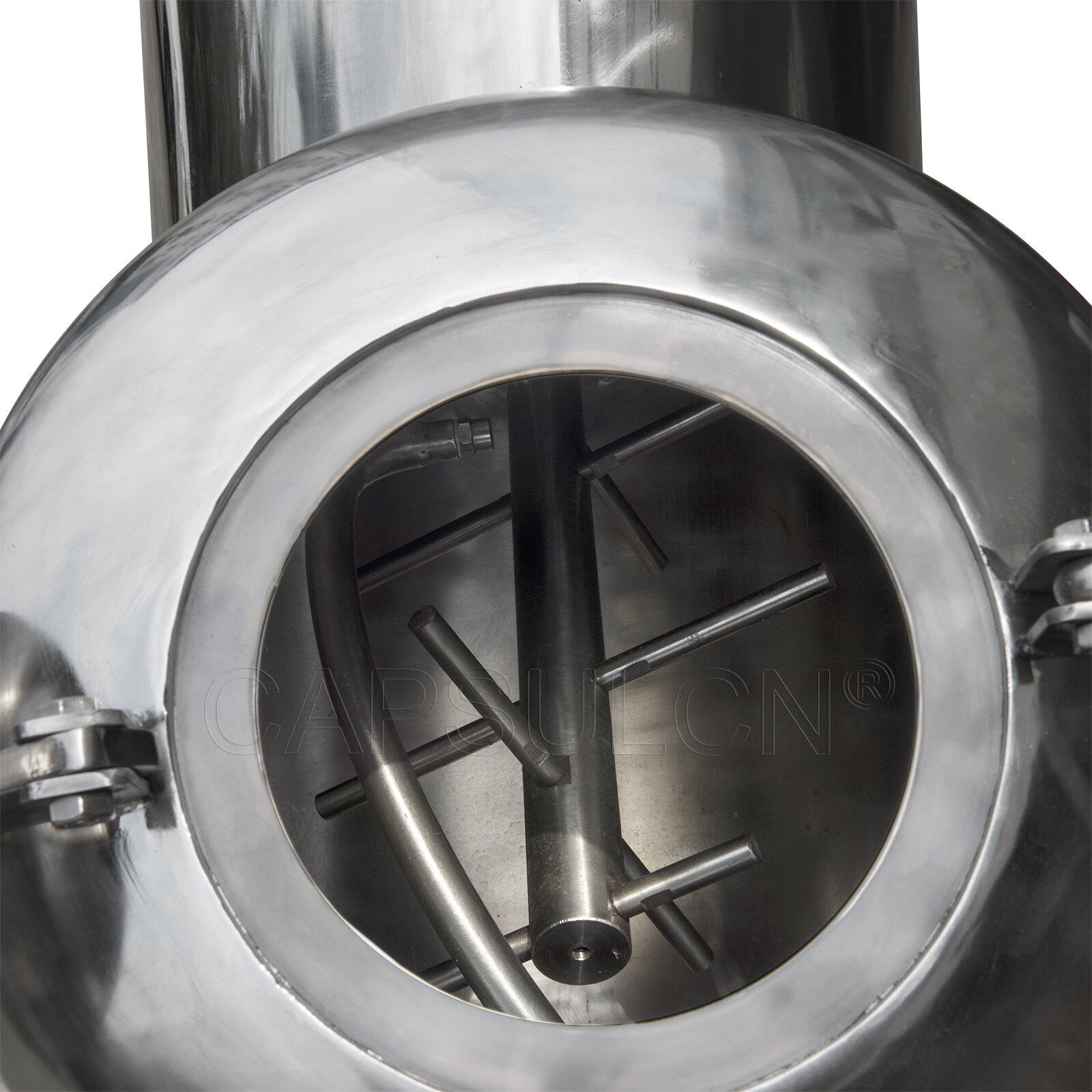
Also, the twin shell blender construction makes it possible to include trace amounts of liquid ingredients using spray nozzles mounted on the intensifier bar. As the blender rotates, the liquid addition can be sprayed constantly across the solids.
V blenders can also be customized to include heating and cooling jackets, vacuum drying systems, explosion-proof motors and controls, and other specialized components to cater to a wide range of mixing applications.
V blender working principle
How does a V blender actually work, though?
V blenders cause materials to cascade within a rotating vessel relying on the action of gravity. Simply put, they work on a diffusion mechanism: solids are dispersed across the newly exposed surface as the vessel rotates about a horizontal axis.
As you can tell, the V cone blender principle is quite simple.
Materials to be blended are loaded via two feed inlets on the top of the V-shaped mixing vessel. Here's a tip. Fill the blender up to between 50 and 60 percent of its total volume. The fill-up volume beyond this range will probably double the mixing time if you want a homogeneous blend.
When the materials are ready, the twin shell blender starts to work. In general, the speed of operation for twin shell blenders is anywhere from 5 to 25 revolutions per minute.
As the V blender performs a 360-degree rotation, the ingredients keep breaking apart and coming back together. This is an integral part of the V blender working principle - the blending process.
The blending happens as the ingredients fall randomly inside the vessel. The material moves repeatedly toward and away from the center of the vessel. This, along with increased friction between the material and the long, straight sides of the vessel, causes a gentle but even mixing.
The speed of the V blender can also affect how well it mixes. There is a critical speed that, when reached, makes mixing much less effective. V blenders are typically made to run between 50% and 80% of the critical speed.
The normal cycle duration is somewhere in the range of 15 minutes; however, it may be significantly shorter depending on the complexity of the blending.
Following that, the mixed product is discharged through a butterfly valve that has been hermetically sealed. The valve can be operated manually by using a hand lever, or it can be controlled pneumatically.
That's all about the V cone blender principle. As you can see, the idea behind how twin shell blenders work is not rocket science.
What are the advantages of V blender?
So, why should you choose a twin shell blender? And when you compare V blenders with other types, such as V blender vs ribbon blender, which one should you choose?
V blenders are a solid choice to go with when you need to blend free-flowing solids or low-viscosity liquids.
Here are a bunch of advantages of V cone blenders.
- The V cone blender principle is simple to grasp.
- The blender is simple to use, easy to clean, and low-maintenance.
- The twin shell blender construction allows easy loading and complete discharge of materials.
- Two feed inlets and one discharge valve feature a dust-right design to prevent contamination.
- Homogeneous blends can be achieved in a short time.
- All parts that come into contact with the product are fabricated from stainless steel to resist corrosion and contamination.
- The V cone blender works well in situations where some ingredients make up as little as 5% of the whole blend.
- The blender comes without agitator blades, which help maintain the particle size of the ingredients throughout the blending process.
- With no protruding shaft, the mixing vessel can keep material build-up at bay.
- This piece of blending equipment can come with an intensifier bar for better mixing, as well as a spray system, a heating or cooling jacket, and other components, depending on your needs.
How can iPharMachine fulfill your blending needs?
At iPharMachine, we can help with all your blending needs, beginning with the laboratory scale and working your way up to the commercial batch sizes. We offer a wide range of v type blenders, from mini models to large ones with a maximum filling loading capacity of 1600L.
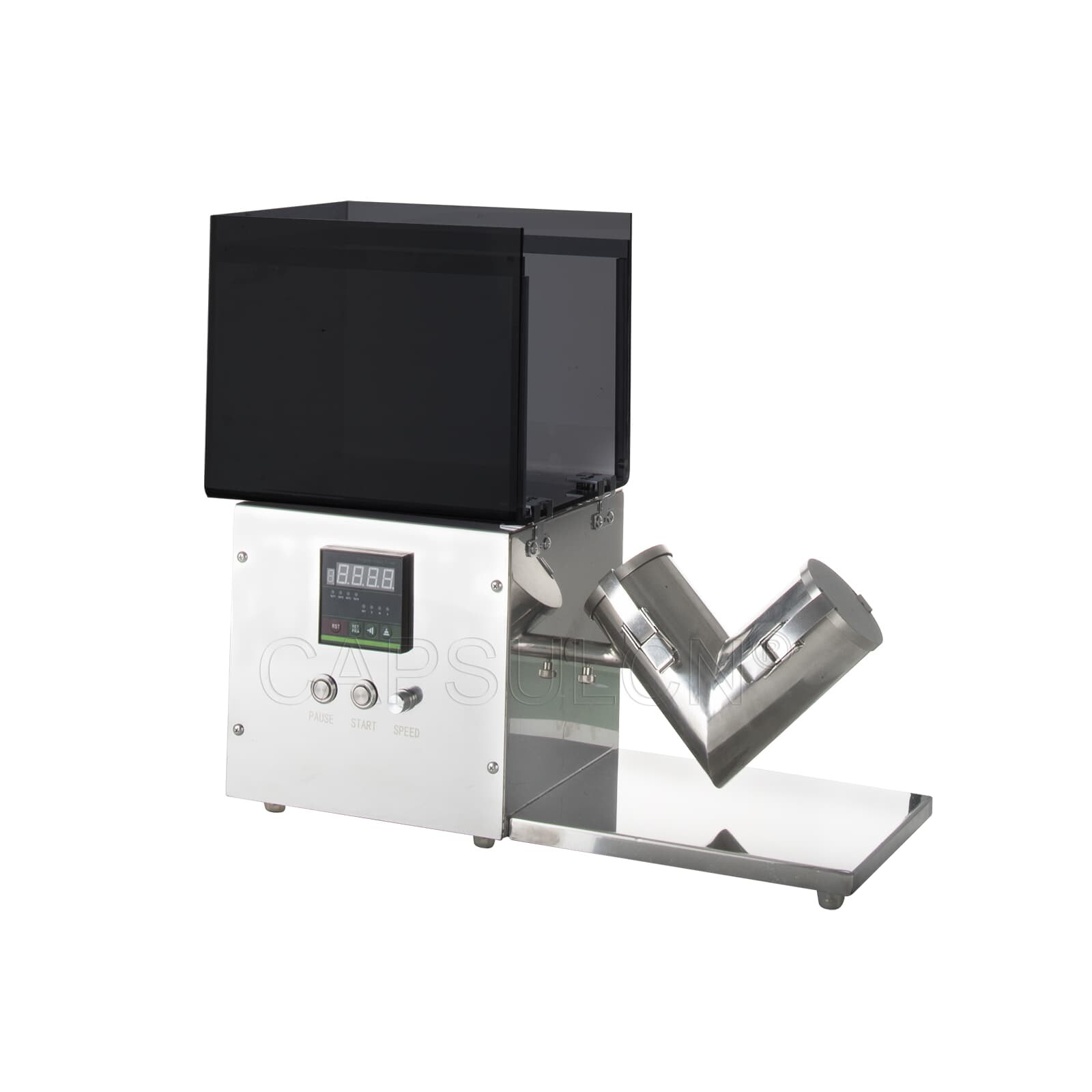

iPharMachine is a reliable partner to have on your side whether you're seeking one-stop solutions. After addressing your blending needs, we are also able to assist you with the next processes, such as filling and packaging. Contact us today to find out more!
Leave your comment
Also Offers


Containment Automatic Capsule Filling Machine SFK-703

Fully Automatic Dosator Capsule Filling Machine CZ-40

Our Team
As an expert in the pharmaceutical and pharmaceutical packaging industry, iPharMachine has provided solutions for hundreds of pharmaceutical and health product manufacturers for 17 years. By visiting customers, we get good reviews from our customers.
- info@ipharmachine.com
- English Español Deutsche







